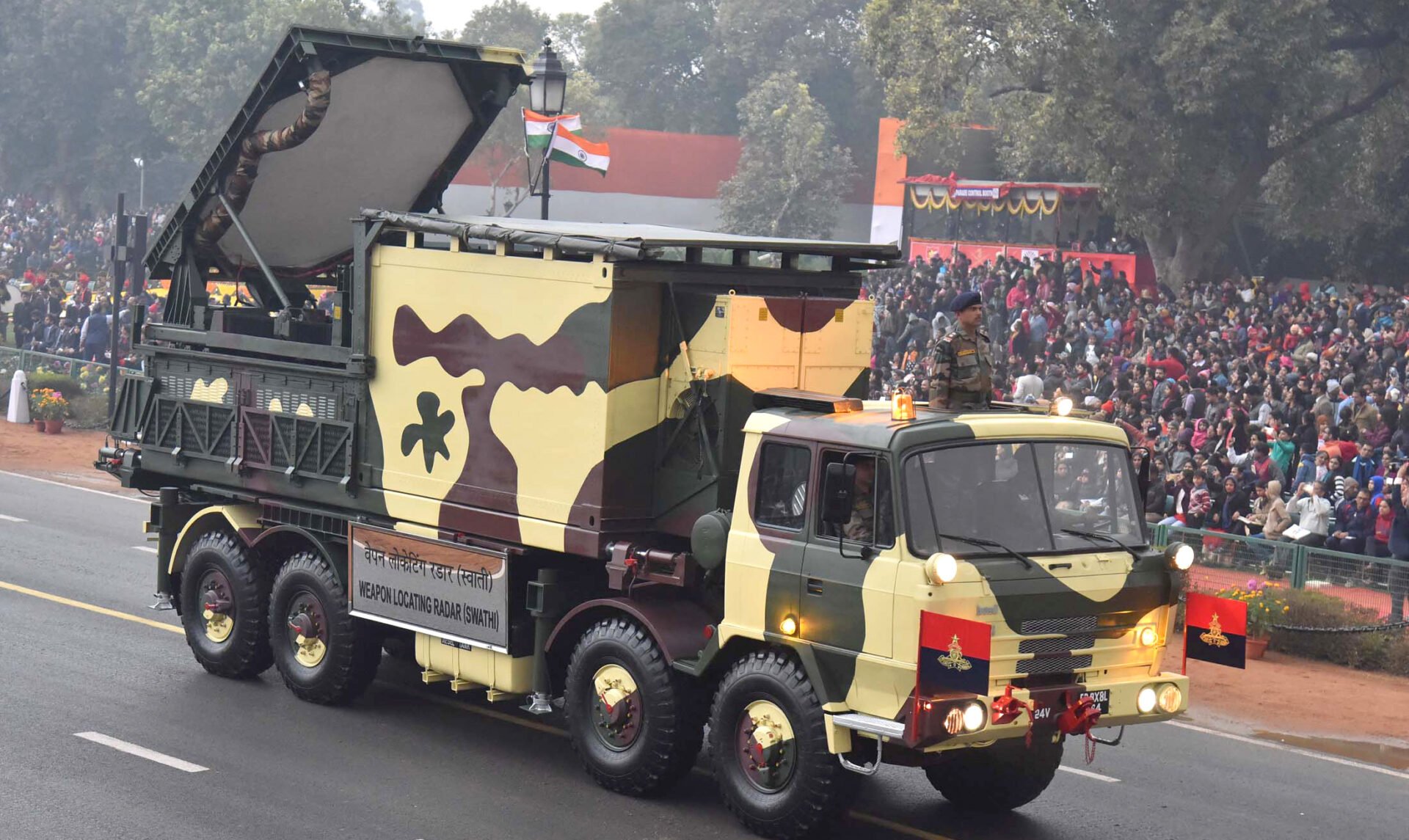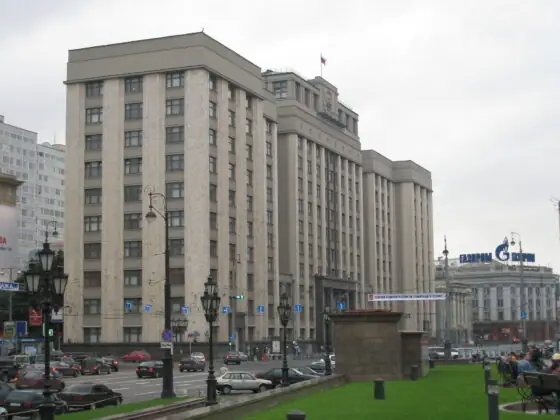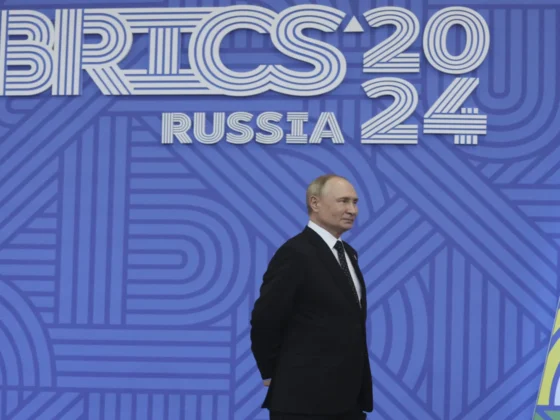(PONARS Eurasia Policy Memo) Armenia’s recent purchase of the Swathi weapon locating radar from India is significant. It represents New Delhi’s first international customer as its defense sector transitions from being a net arms importer to a global military and technology supplier. The transfer also took place against the backdrop of the Second Nagorno-Karabakh War in the autumn of 2020 and nascent linkages between the Armenia-Azerbaijan and India-Pakistan rivalries. Observers have characterized the sale as mutual counterbalancing against an emerging Turkey-Azerbaijan-Pakistan axis, or an effort by Armenia to move away from its military dependency on Russia. While the Swathi purchase was made prior to the ensuing regional crisis, the system was not actually delivered to Armenia until the following year. At the same time, Yerevan was subject to a disinformation campaign by Pakistani and Chinese state-affiliated media in an attempt to discredit Swathi.
Popular geostrategic accounts overlook more compelling explanatory factors behind Armenia’s acquisition policy. One is the link between the technical specifications of Swathi and commonalities in tactical requirements in the Kashmir and Nagorno-Karabakh conflicts. The second is the Indian defense industry’s search for external clients and the evolution of Armenia’s bilateral relations with India toward security cooperation.
South Asia Meets the South Caucasus
In March 2020, Armenia had the distinction of becoming the first international client to acquire the Swathi system, which is jointly produced by the Indian Defense Research and Development Organisation (DRDO) and Bharat Electronics Limited (BEL), at a cost of $40 million. Swathi represents the latest generation of phased array or electronically steered radars used by ground forces to detect and direct counter-battery fire against enemy ordnance.
Armenia’s choice came at a time of transition in the Indian defense sector. As a net arms importer—second in the world only to Saudi Arabia at 9.5 percent of the global market—increasing military technology exports is a potential showcase of Prime Minister Narendra Modi’s “Make in India” economic initiative, with a target of $26 billion in turnover by 2025. Defense trade journals made much of how India successfully outbid the Russian Almaz-Antey and Polish PIT-RADWAR armament firms with which the Armenian military has a more extensive procurement relationship. Armenia has had a formal alliance with Russia since the late 1990s, and a joint defense production venture with Poland since 2013.
Conventional wisdom quickly emerged among analysts that the Swathi transfer was motivated by geostrategic considerations or balancing behavior by Eurasian regional powers. This was especially reinforced by the July border clashes and 44-day war of September-November 2020 with neighboring Azerbaijan over the disputed Nagorno-Karabakh subregion, in which Armenia suffered significant casualties and territorial losses.
Observers have noted how, in recent years and despite their physical distance, an “indirect linkage” between the Armenia-Azerbaijan and India-Pakistan rivalries in Karabakh and Kashmir has emerged based on diplomatic and ideological affinities or common foes rather than direct military involvement. In addition, in November 2017, Turkey, Azerbaijan, and Pakistan signed a Trilateral Ministers Agreement that established security cooperation between the three governments that built upon previous bilateral military aid arrangements. Some have characterized this as an emerging axis designed as a counterweight to opposing states, given Turkish President Recep Tayyip Erdoğan’s steadfast support for Azerbaijan in Karabakh (providing military advisers, special forces units, drones, and allegedly Syrian fighters in the 2020 war) and growing tensions with India over his vocal support for Pakistani sovereignty claims in Kashmir in the UN General Assembly. Others suggest this has moved closer to the characteristics of a formal alliance with the Three Brothers joint exercises between their special forces held in Baku during September 2021.
While there is evidence that Pakistan (in tandem with Turkey) provided military training and arms transfers to Azerbaijan during the recent war in accordance with its long-standing policy of non-recognition of Armenia, until recently, Armenia’s burgeoning bilateral relations with India did not extend to direct security assistance, despite mutual public support for one another’s positions in the Karabakh and Kashmir conflicts. Prime Minister Nikol Pashinyan backed the decision to revoke Kashmir’s autonomous status in the Indian constitution in an interview with the World Is One News (WION) network in 2019. Although Azerbaijan has expressed solidarity with Pakistan in Kashmir for many years, this has remained limited to upholding international law in resolving the conflict and does not preclude diplomatic relations with New Delhi, which have remained positive. As a case in point, Swathi had not yet been used in Armenian Armed Forces combat operations at the time of serious escalation of hostilities with Azerbaijan in the summer and autumn of 2020.
One must therefore identify other factors behind the diversification of Armenian defense imports. A major point of contention has emerged in recent years involving Russia’s policy of providing an equal number of arms to Azerbaijan, eventually becoming its main supplier (up to 80 percent of total imports in 2013) despite its security commitments to Armenia. Although Kremlin officials assert that Armenia is privileged with the most sophisticated weapons systems at discounted prices (including consecutive annual loans of $100 million), the above has fostered the belief among Armenian military elites that Moscow seeks to maintain a balance in capabilities between the combatants. At the same time, purchases of new Russian weaponry remain expensive.
Furthermore, Armenian-Indian relations have a significant level of technical assistance and scientific cooperation, particularly in microcomputers and information technology (IT). Such developments provide a potential avenue for future applications to defense and security (such as satellite-based surveillance systems) as their diplomacy matures. While Armenia’s receiving of arms from India may constitute a new policy, the groundwork for advancing security ties between Yerevan and New Delhi has evolved gradually over the past decade. Mutual high-level visits between former National Security Council secretary Artur Bagdasaryan and his Indian counterparts in 2011 and 2013 produced agreements on regular security consultations and a memorandum of understanding on cooperation between defense institutions. An Armenian defense ministry delegation to India led by policy department head Levon Ayvazyan in 2017 reached agreements on enhancing military-technical cooperation, including education, peacekeeping, mountain training, and exercises and drills. In 2018, Indian defense representatives attended the ArmHiTech International Exhibition of Armaments and Defense Technologies in Yerevan, while a reciprocal visit to the DRDO firing range at Pokhran expressed interest in purchasing indigenous weapons such as the Pinaka multiple-barrel rocket launcher system. Most recently, the Embassy of India in Yerevan appointed a military attache at the rank of general to Armenian defense minister Arshak Karapetyan in order to facilitate increased security cooperation.
Counterbalancing versus Disinformation
The Chinese and Pakistani national security establishments apparently perceived India’s new defense export policy as sufficiently threatening to attempt to sabotage public opinion regarding Swathi. In the weeks following the Karabakh ceasefire during November–December 2020, social media users and state-affiliated news outlets in Beijing and Islamabad disseminated a series of false reports alleging official complaints by Yerevan of its unsatisfactory performance in interdicting Azerbaijan’s Turkish Bayraktar-TB2 drones. These further claimed demands were made to refund the purchase, even though the system had not yet been delivered to Armenia. Such measures were likely an extension of Armenian-Azerbaijani information warfare conducted in parallel with the 44-day battle in which both fabricated and authentic Twitter activity linked to extra-regional actors in Turkey, India, and Pakistan also contributed to the conflict. This effort also followed recent trends in Chinese media of exploiting reports of corruption and bottlenecks in Indian defense procurement to undermine confidence in India’s military capabilities.
RIA Novosti and Sputnik military analyst Alexander Khrolenko also criticized the purchase (which was further disseminated in the Armenian and Azerbaijani press), touting the technical superiority of the Russian Zoopark-1 1L219M radar (which Armenia passed over in favor of Swathi after conducting firing trials), denying its usefulness in Kashmir, and citing U.S. influence in its design.However, despite popular assumptions that the Swathi sale represents an effort to shift away from Russian dominance, it appears to be essentially compatible with the status quo in Moscow’s traditional defense relationship with both Armenia and India. The Russian Air Force provided a strategic airlift via Antonov AN-124 cargo planes to transport the four acquired platforms from Bengaluru to Yerevan in January 2021.
Technical Specifications and Common Tactical Requirements
Several technical characteristics and design features of Swathi make it a strong prospect for incorporation into the Armenian arsenal and artillery doctrine. One of the primary reasons Swathi was developed beginning in the early 2000s was the need for a weapon-locating radar that could perform effectively in high-altitude operational environments like the Line of Control (LoC) in Kashmir, where Pakistani forces supplied with U.S. FireFinder radar systems have often enjoyed a tactical advantage. These conditions proved a major liability for Indian army troops who relied upon outmoded British mortar detectors in previous battles such as the Kargil War of 1999. Swathi’s onboard electronics are designed to function up to 16,000 feet above sea level in high heat and humidity, with an operating temperature range from -20 to +55 degrees Celsius. The platform is supported by an eight-wheel-drive Tatra truck intended for rugged or uneven ground. These are also expected to benefit Armenian forces in mountainous terrain and extreme temperatures familiar to Karabakh’s shifting LoC.
Most importantly, its tracking capacity includes 7-9 inborne projectiles simultaneously and can detect 81 mm mortars at 20 km (about 12.5 miles), 105 mm artillery shells at 30 km, and light unguided rockets at 40 km (which Indian experts assert is greater than the Russian Strela IL260E). While much attention has been given to Azerbaijan’s use of Turkish and Israeli drones as a decisive factor in its recent battlefield success, its possession of a diverse array of rocket artillery, including the 300 mm Turkish TRG-300, Belarusian Polonez, and Russian/Ukrainian BM-30 Smerch, played an equally significant role. Swathi’s detection range would well serve to counter these assets. Swathi operates by scanning a sector with a vertical azimuth of 90 degrees, a horizontal aspect angle of 180 degrees, and a radius of 50 km and utilizes signal pulse compression techniques to produce high-range resolution and reduce the probability of interception by enemy radar warning equipment. It also stores data on up to 99 target locations with broad digital map displays and reports them to a fire control center.
In contrast, the leading Russian Zoopark-1 radar is mounted on an MTLB wide-tracked chassis originally designed for soft terrain such as marshlands. It has a slightly lower detection range for mortars, rockets, and enemy firing positions. At the same time, the Polish LIWIEC is mainly advertised as utilizing 23 mm artillery shells that Soviet and Russian forces have historically used. Finally, Swathi is reportedly more cost-effective, as the units were offered to Armenia for a lower price than its Russian and Polish competitors.
Conclusion and Future Developments
A review of the domestic political, economic, and military context behind the Swathi transfer suggests that geostrategic explanations have their limitations. The unsettled situation on the ground in Nagorno-Karabakh since the ceasefire of November 9, 2020, and continued skirmishes between Armenian and Azerbaijani forces in the newly contested border zones will provide ample opportunity for the tactical application of Swathi in defensive operations. As the Indian Army began using the platform in Kashmir in 2017 and recently procured an upgraded Swathi Mark 2 with lighter weight characteristics specifically designed for mountain warfare, they are also in a prime position to advise on its technical functions and performance.
In addition, given Russia’s historical arms supply relationship with India dating to the Soviet period (a reported 49 percent of total imports from 2016-2020) and President Vladimir Putin’s December 2021 summit meeting with Modi in which new arms deals were signed, there is also potential for the above acquisition strategy to develop as a complement rather than an alternative to the Russia-Armenia alliance. The employment of Swathi in local conflicts by both countries can be expected to reinforce this foundation as the Indian defense industry expands its portfolio of foreign clients and the Armenian military seeks more advanced technologies to counter national security threats.
Jason E. Strakes is a Coordinator at the Caucasus-Asia Center.
PONARS Eurasia Policy Memo No. 741











